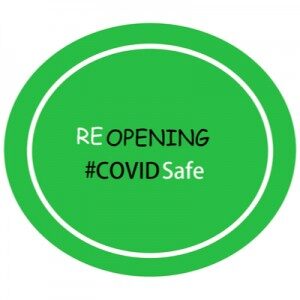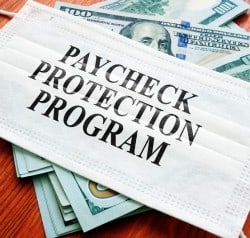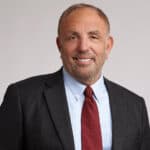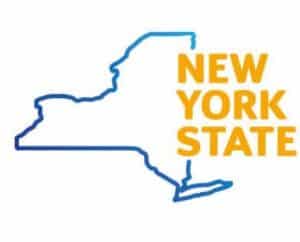“Q&As” covering the latest Federal and New York State COVID-19 paid leave requirements for nonprofits and businesses
I . FOR ALL EMPLOYERS REGARDLESS OF STATE
Overview
Families First Coronavirus Response Act: Following the devastating impact of COVID-19 on the health of American workers and the workplace, on March 18, 2020, the President of the United States signed Families First Coronavirus Response Act, or H.R. 6201 (“FFCRA” or the “Act”) into law. The FFCRA requires employers with fewer than 500 employees –including nonprofit organizations—to provide their employees with job-protected paid sick leave and/or expanded family and medical leave where they miss work for specified reasons related to COVID-19.
The law took effect on April 1, 2020 and ends on December 31, 2020. Among other provisions of the FFCRA, most relevant to U.S. employers are three key provisions:
- Emergency Paid Sick Leave Act (EPLSA)
- Emergency Family and Medical Leave Expansion Act, amending the Family and Medical Leave Act of 1993 (EFMLEA)
- Payroll tax credits for employer paid leave payments under EPSLA or EFMLEA
This Alert addresses these three key FFRCA provisions, some specific questions answered by the U.S. Department of Labor in its guidance, and New York State’s own COVID-19 Quarantine Paid Sick Leave Law (“NYS Paid Sick Leave”), also signed into law on March 18, 2020, and the interplay between the two laws. Regulations implementing the FFCRA are expected in early April.
NYS’s Paid Sick Leave Law also took effect on March 18, 2020, and requires employers to provide job-protected sick leave to employees and their minor children who are subject to a quarantine or isolation order due to COVID-19.
U.S. DOL Regulations and Guidance
On April 1, 2020, the U.S. Department of Labor (DOL) issued temporary implementing regulations.
Prior to that, on March 24, 28 and 29, 2020, the U.S. Department of Labor (DOL) supplemented its resources on COVID-19 and the American Workplace by issuing:
- Q & As for employers covered by FFCRA (i.e., those with fewer than 500 employees)
- FACT SHEETS FOR EMPLOYERS AND EMPLOYEES (in English/Spanish)
- MANDATORY FFCRA POSTER AND Q & A ON POSTING: Posting required by April 1st.
- DOL FIELD ASSISTANCE BULLETIN: Providing employers with temporary non-enforcement of violations of the FFCRA by the DOL through April 17th.
Below are Q & As addressing each of those three provisions of the FFCRA affecting workers at businesses and nonprofit organizations, including some questions and answers by the DOL:
Q: Which Employers are Covered by FFCRA?
A: In general, the paid sick leave and expanded family and medical leave provisions of the FFCRA apply to employers with fewer than 500 employees (for-profit and non-profit alike), and certain public sector employees with at least 1 employee. Most employees of the federal government are covered by Title II of the Family and Medical Leave Act (FMLA), which was not amended by this Act, and are therefore not covered by the expanded family and medical leave provisions of the FFCRA. However, federal employees covered by Title II of the Family and Medical Leave Act are covered by the paid sick leave provision.
Small businesses with fewer than 50 employees may qualify for exemption from the requirement to provide leave due to school closings or child care unavailability if the leave requirements would jeopardize the viability of the business as a going concern.
Q: What are FFCRA’s Paid Leave Entitlements?
A: Under the FFCRA, eligible employees are entitled to:
- Up to two weeks (80 hours for full-time employee) fully or partially paid leave, or a part-time employee’s two-week equivalent of paid sick leave based on the higher of their regular rate of pay, or the applicable state or Federal minimum wage, paid at:
– 100% for Qualifying Reasons #1-3 below, up to caps of $511 per day and $5,110 in the aggregate;
– 2/3 for Qualifying Reasons #4 and 6 below, up to $200 daily and $2,000 aggregate for the entire two-week paid leave period; and
– Up to 12 combined weeks of paid sick leave and expanded family and medical leave (paid at 2/3 for Qualifying Reason #5 below (2 weeks’ paid sick leave plus additional 10 weeks’ paid family leave), up to a cap of $200 per day per employee and $12,000 total (over 12-week period).
Employees need not be employed for any particular period of time to be eligible for Emergency Paid Sick Leave Act (EPSLA). Note, however, that in order to be eligible for leave under the Emergency Family and Medical Leave Expansion Act (EFMLEA) which is an expansion of the federal Family and Medical Leave Act (FMLA), employees must be employed for at least 30 days before their leave request to be eligible for up to an additional 10 weeks of partially paid expanded family and medical leave under EFMLEA for Qualify Reason #5 below.
A part-time employee is entitled to leave for his or her average number of work hours in a two-week period.
Q: What are the Qualifying Reasons for Paid Leave Related to COVID-19?
A: An employee is entitled to take leave related to COVID-19 if the employee is unable to work (including telework) because:
(1) The employee is subject to a Federal, State, or local quarantine or isolation order related to COVID–19.
(2) The employee has been advised by a health care provider to self-quarantine due to concerns related to COVID–19.
(3) The employee is experiencing symptoms of COVID–19 and seeking a medical diagnosis.
(4) The employee is caring for an individual who is subject to an order as described above in subparagraph (1) or has been advised as described in paragraph (2).
(5) The employee is caring for a son or daughter of such employee if the school or place of care of the son or daughter has been closed, or the child care provider of such son or daughter is unavailable, due to COVID–19 precautions.
(6) The employee is experiencing any other substantially similar condition specified by the Secretary of Health and Human Services in consultation with the Secretary of the Treasury and the Secretary of Labor.
Where the paid sick leave is being used because of Qualifying Reasons #1, 2 or 3, above, the employee is eligible for his/her regular rate of pay, up to a cap of $200 per day and $2,000 in the aggregate.
Q: How much will an employee be paid while taking paid sick leave or expanded family and medical leave under the FFCRA?
A: The amount depends on an employee’s normal schedule as well as why the employee is taking leave.
- If an employee is taking paid sick leave because they are unable to work or telework due to a need for leave because they (1) are subject to a Federal, State, or local quarantine or isolation order related to COVID-19; (2) have been advised by a health care provider to self-quarantine due to concerns related to COVID-19; or (3) are experiencing symptoms of COVID-19 and are seeking medical diagnosis, he/she will receive for each applicable hour the greater of their regular rate of pay, the federal minimum wage in effect under the FLSA, or the applicable State or local minimum wage. An eligible employee is entitled to a maximum of $511 per day, or $5,110 total over the entire paid sick leave period.
- If an employee is taking paid sick leave for reasons above in #4 and 6 (i.e., specifically because he/she is: (a) caring for an individual who is: (1) subject to a Federal, State, or local quarantine or isolation order related to COVID-19 or (2) an individual who has been advised by a health care provider to self-quarantine due to concerns related to COVID-19; or (3) experiencing any other substantially-similar condition that may arise, as specified by the Secretary of Health and Human Services), the employee is entitled to compensation at 2/3 of the employee’s regular rate of pay, or federal or State minimum wage. Under these circumstances, the employee is subject to a maximum of $200 per day, or $2,000 over the entire two-weeks.
- Similarly if an employee is taking expanded family and medical leave under Emergency Family and Medical Leave Expansion Act (EFMLEA) as they are unable to work because they are caring for their child whose school or childcare place is closed, or child care provider is unavailable, due to COVID-19 related reasons, the employee gets up to 12 weeks of paid sick leave and expanded family and medical leave combined.
The first ten (10) days of that EFMLEA leave period are unpaid (or the employee may substitute any accrued vacation leave, personal leave, or medical or sick leave under an employer’s policy, or if the leave also qualifies for paid sick leave under EPSLA, the employee can get those first 10 days paid under EPSLA’s terms), but the remaining leave will be paid at an amount no less than 2/3 of the employee’s regular rate of pay for hours he/she would be normally scheduled to work. An employee will not receive more than $200 per day or $10,000 for the remaining weeks.
Q: If an employee takes paid sick leave under the Emergency Paid Sick Leave Act (EPSLA), does that count against other types of paid sick leave to which an employee is entitled under State or local law, or against the employer’s own sick leave policy?
A: No. Paid sick leave under the Emergency Paid Sick Leave Act (EPSLA) is in addition to other leave provided under Federal, State, or local law; an applicable collective bargaining agreement; or an employer’s existing company policy.
Q: If an employee is able to telework while caring for their child, are they still entitled to paid sick leave or expanded family and medical leave?
A: No. To the extent an employee is able to telework while caring for their child, paid sick leave and expanded family and medical leave is not available.
Q: Does the employee have to provide notice of the need for sick/family leave and supporting documentation?
A: Yes, it will be reasonable for an employer to require notice as soon as practicable after the first workday is missed, and to require that employees provide oral notice and sufficient information for an employer to determine whether the requested leave is covered by the FFCRA. It is reasonable for the employer to require the employee to comply with the employer’s usual notice procedures and requirements, absent unusual circumstances.
An employer may require an employee to provide supporting documentation for their request to take paid sick leave including the qualifying reason for the leave, dates for the leave, and a statement representing that the employee is unable to work or telework because of the COVID-19 qualifying reason. An employee may need to provide additional supporting documentation depending on the qualifying reason for the leave. For paid family leave, for instance, where leave is sought because a child’s school is closed, the employer may require a notice that has been posted on a government, school, or day care website, or published in a newspaper, or an email from an employee or official of the school, place of care, or child care provider. The employer must retain this documentation in support of leave under the FFCRA for four years.
The employee may also be required by the employer to provide the employer with supporting documentation for paid sick and expanded family and medical leave as specified in applicable IRS forms, instructions, and information.
Job Restoration
Q: Does FFCRA guarantee job restoration for employees?
A: Yes, but with conditions if the employer has fewer than 25 or more employees. The FMLA Expansion Act is an amendment to the FMLA which provides job-protected leave to employees. In most instances, an employee is entitled to be restored to the same or an equivalent position upon return from paid sick leave or expanded family and medical leave.
However, an employer may also refuse to return an employee to work in the same position if he/she is a highly compensated “key” employee as defined under the FMLA, or if the employer has fewer than 25 employees, and the employee took leave to care for his/her own son or daughter whose school or place of care was closed, or whose child care provider was unavailable, and all four of the following hardship conditions exist:
- the position no longer exists due to economic or operating conditions that affect employment and due to COVID-19 related reasons during the period of the employee’s leave;
- the employer made reasonable efforts to restore employee to the same or an equivalent position;
- the employer makes reasonable efforts to contact the employee if an equivalent position becomes available; and
- the employer continues to make reasonable efforts to contact the employee for one year beginning either on the date the leave related to COVID-19 reasons concludes or the date 12 weeks after the employee’s leave began, whichever is earlier.
Further, an employee is not protected from employment actions, such as layoffs, that would have affected the employee regardless of whether the employee took leave. The employer can lawfully lay off employees for legitimate business reasons, such as the closure of the worksites so long as the employer can demonstrate that the employee would have been laid off even if he/she had not taken leave.
Exemptions
Q: Are There Any Exemptions Under FFCRA?
A: The U.S. Department of Labor may issue regulations to (i) exclude certain health care providers and emergency responders from paid leave benefits, and (ii) exempt small businesses with fewer than 50 employees from the paid leave requirements “when the imposition of such requirements would jeopardize the viability of the business as a going concern.”
Q: When does the small business/small nonprofit exemption apply?
A: An employer, including a religious or nonprofit organization, with fewer than 50 employees is exempt from providing: (a) paid sick leave due to school or place of care closures or child care provider unavailability for COVID-19 related reasons and (b) expanded family and medical leave due to school or place of care closures or child care provider unavailability for COVID-19 related reasons when doing so would jeopardize the viability of the small business as a going concern.
Furlough, Layoff, Termination
Q: If an employer closes its worksite on or after April 1, 2020 (the effective date of the FFCRA), but before an employee goes out on leave, can the employee still get paid sick leave and/or expanded family and medical leave?
A: No. If an employer closes after the FFCRA’s effective date (even if the employee requested leave prior to the closure), the employee will not get paid sick leave or expanded family and medical leave, but may be eligible for unemployment insurance benefits.
Q: If an employer is open, but furloughs an employee on or after April 1, 2020 (the effective date of the FFCRA), can that employee receive paid sick leave or expanded family and medical leave?
A: No. If an employer furloughs an employee because it does not have enough work for that employee, the employee is not entitled to then take paid sick leave or expanded family and medical leave, but the employee may be eligible for unemployment insurance benefits.
Reimbursement for Paid Leave/Payroll Tax Credits
Q: Is the Government Going to Help with Costs of Mandatory Paid Leave That Employers are Being Forced to Pay During this Time of Financial Hardship?
A: Yes. FFCRA provides covered employers (both nonprofit and for-profit) with refundable payroll tax credits that reimburse them for their paid sick and family leave payments under the law. The credits are applicable to the employer’s portion of Social Security taxes for 100% of the qualified sick leave and family leave wages paid by the employer in accordance with the law, up to the appropriate per diem and aggregate payment caps. Covered employers may seek reimbursement for these tax credits after employer pays the paid leave (whether it’s the paid sick or paid family leave) when filing their quarterly returns (IRS Form 941). Applicable tax credits also extend to amounts paid or incurred to maintain health insurance coverage.
The IRS has issued guidance and an FAQ concerning the tax credits. Under IRS guidance, the employment tax credits under FFCRA are available for wages paid for the period between April 1, 2020, and December 31, 2020. (Note, however, that SBA loans under the Paycheck Protection Program may not be used to pay for leave under the FFCRA).
Penalties and Enforcement
Q: What are the penalties for non-compliance with the Act?
A: Employers in violation of the EPSLA or EFLMEA, including retaliation, will be subject to penalties and enforcement by U.S. DOL’s Wage and Hour Division. Employees may file complaints with the US DOL for violations of those laws. With respect to violation of the EFMLEA, an employee may have a private right of action against the employer if they would otherwise be protected by the FMLA.
Q: Is there a safe-harbor period for employers before enforcement?
A: Yes. On March 26, 2020, DOL issued a Field Assistance Bulletin, stating that it would not enforce the law against employers through April 17th (30 days from the Act’s passage) where the employer has acted reasonably and in good faith to comply with the Act.
II. FOR NEW YORK STATE EMPLOYERS
New York State Emergency COVID-19 Quarantine Paid Leave Law
On March 18, 2020, Governor Cuomo signed into law New York’s Emergency COVID-19 Paid Sick Leave law (NY Paid Sick Leave), on the same day as the FFCRA was enacted. Unlike FFCRA which takes effect on April 1, NY Paid Sick Leave Law took effect on March 18, 2020. Notably, NY Paid Sick Leave Law took effect before the Governor issued the “NY on PAUSE.”
Below are Q & A addressing the key components of New York State’s Emergency COVID-19 Quarantine Paid Sick Leave/Paid Family Leave law and addressing interplay with FFCRA:
Q: Who Is Eligible for New York State’s Emergency COVID-19 Quarantine Paid Sick Leave/Paid Family Leave (NYS Paid Sick Leave Law)?
A: Employees in New York or their minor dependent child–who are subject to an order of mandatory or precautionary quarantine or isolation due to COVID-19–may be eligible for a certain amount of job-protected sick leave and compensation through a combination of disability and paid family leave benefits, for the duration of the quarantine order. To be eligible, a full-time employee must have regularly worked 20 hours or more per week and must have been in employment for at least 26 consecutive weeks with that employer. A part-time employee who regularly works less than 20 hours per week must have worked 175 days to be eligible. The State guidance on the leave makes clear that employees are not eligible for this leave if they can work remotely or through other means.
Q: If an Employee is Asymptomatic or Not Diagnosed with a Medical Condition and Is Physically Able to Work, Are They Eligible for These Benefits?
A: No. Benefits do not apply in cases where an employee is deemed asymptomatic or has not yet been diagnosed with any medical condition and is physically able to work while under a mandatory or precautionary order of quarantine or isolation, whether through remote access or other similar means. Benefits are also not available to employees who voluntarily traveled to a country with a level 2 or 3 health notice from the Centers for Disease Control and who were provided notice of the travel health notice and knew about this restriction in the new law.
Q: How Does This Apply to A Minor Dependent Child?
A: If an employee’s minor dependent child is under a mandatory or precautionary order of quarantine or isolation issued by the state of New York, the New York State Department of Health, local board of health, or any government entity duly authorized to issue such order due to COVID-19, an employee may be eligible to take Paid Family Leave to care for them. This benefit is not available to an employee able to work through remote access or other means.
Q: How much paid leave is an eligible employee entitled to?
A: The amount of job-protected paid leave depends on employer size:
– Employers with 10 or < employees (as of 1/1/20): New York employers already provide statutory short-term disability and Paid Family Leave benefits to their employees. This requirement has not changed with the new rules related to Coronavirus/COVID-19. Those insurance policies will provide compensation to employees who are under quarantine. Employees complete the same form as they would if they would ordinarily be applying for paid family leave benefits.
– Employers with 11-99 employees, or employers with < 10 employees (as of January 1, 2020) and annual income > $1 million in 2019: Employers must provide employees with at least 5 days of paid sick leave while on quarantine. If employees do not have more sick leave while on quarantine, an employer should help them apply with the employer’s Paid Family Leave and disability insurance carrier (the maximum paid family leave and disability benefit is $2,884.62 per week). Employees may not be required to use any accrued sick leave that their organization provides, but may choose to use any paid time off after exhausting the State-mandated five days of paid sick leave.
Eligible employees make a request for leave for themselves or their minor child due to COVID-19 directly to their employer who then provides them with applicable forms.
– Employers with 100 or more employees as of January 1, 2020 and public employers: Employers must provide employees with at least 14 days of paid sick leave. Public employers (for example, town, public school, public college or university, district, county, city, village, fire district and state), must provide at least 14 days of paid sick leave, regardless of how many employees they have.
Q: Is There Job Protection?
A: Yes. Employers must reinstate the employee to the same or a comparable position, upon returning from leave, and like FFCRA, retaliation is prohibited.
Q: If An Eligible Employee Already Has Accrued Paid Sick Leave Under NYC Paid Sick Law or Under Its Own Employer Policy, Must An Employer Also Still Provide COVID-19 NY Paid Sick Leave?
A: Yes. COVID-19 NY Paid Sick Leave is in addition to any other paid sick leave.
Interplay Between FFCRA and NYS Paid Sick Leave Law
Q: If an Employee is Eligible for Both FFCRA and COVID-19 NYS Paid Leave, Which Leave Law Applies?
A: Where the federal and state laws overlap on mandatory quarantine, the federal law applies. State law applies to the extent it gives employees additional benefits beyond what federal law allows.
Q: How Do the FFCRA and NYS Paid Sick Leave Law Overlap?
A: The federal Emergency Paid Sick Leave Act and EFMLEA (expanded FMLA) and NYS Paid Sick Leave Law overlap when the reason for leave is due to an employee being subject to a mandatory or precautionary order of quarantine or isolation due to COVID-19, as this is a reason for paid leave supported by both federal and state law.
For example, an employee works for an employer with 60 employees and is subject to a mandatory order of quarantine or isolation due to COVID-19. Under the federal Emergency Paid Sick Leave Law, this employee is entitled to 80 hours of paid sick leave at their regular rate of pay, capped at $511 per day and $5,110 in the aggregate. Under the NY Paid Sick Leave Law, based on employer size, this employee is entitled to 5 calendar days of paid sick leave at their regular rate of pay, and may also be eligible for disability and paid family leave benefits after the 5 days of paid leave, with a maximum of paid family leave and disability benefits payable at $2,884.62.
Thus, to the extent the employee is eligible for benefits greater than the 80 hours of paid sick leave from the New York Paid Sick Leave Law through disability and paid family leave benefits under New York law, the employee may still take advantage of those State law benefits.
Q: What are Penalties for Non-Compliance with COVID-19 NYS Paid Sick Leave Law?
A: If an employer does not provide the required COVID-19 paid leave under New York State’s Paid Sick Leave Law, if the employer requires employees to come to work even if the employer is not an essential business, if the employer requires employees to come to work even if they are performing business operations that are not necessary to support essential services, or is not permitting employees to telecommute or work from home where their job responsibilities would permit them to do so, an employee may file a complaint with the NYS Department of Labor who can enforce the law.
Q: Is There Additional Guidance?
A: For employer guidance on Emergency COVID-19 NY Paid Leave, click here and fact sheet here; or the State’s FAQ about the law, click here; and here, for guidance for New York City employers concerning COVID-19 laws.
III. What Should Employers Do Now?
- Prepare an emergency leave policy addressing the emergency paid sick/family and extended FMLA leaves and ensure that it aligns with existing paid time off/leave policies as well as any mandated paid leaves under State or local laws
- Communicate the updated policies and employee rights under these laws to all staff
- Inform employees how to apply for such leaves and timely respond to employee requests for leave
- Budget for the costs of paid leave for the remainder of the year
- Anticipate how staffing will be addressed to cover those employees on such leave.
- Confer with legal counsel on addressing these updates.
The information provided does not constitute legal advice, and is not intended to substitute for legal counsel.
If you have questions about the FFCRA and its exemptions, or need assistance preparing emergency paid leave policy and other policies related to COVID-19, please contact Lisa Brauner, Esq., Head of Perlman & Perlman LLP’s Employment Law Department, 212-889-0575, ext. 207, lisa@perlmanandperlman.com. Our firm is here for you during this crisis and doing everything we can to support and guide you.
- Perlman & Perlmanhttps://perlmanandperlman.com/author/nancyisrael/
- Perlman & Perlmanhttps://perlmanandperlman.com/author/nancyisrael/
- Perlman & Perlmanhttps://perlmanandperlman.com/author/nancyisrael/
- Perlman & Perlmanhttps://perlmanandperlman.com/author/nancyisrael/














